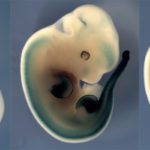Link to Pubmed [PMID] – 26002101
Hum. Mol. Genet. 2015 Aug;24(16):4559-72
Copy number variations on human chromosome 15q11-q13 have been implicated in several neurodevelopmental disorders. A paternal loss or duplication of the Prader-Willi syndrome/Angelman syndrome (PWS/AS) region confers a risk of obesity, although the mechanism remains a mystery due to a lack of an animal model that accurately recreates the obesity phenotype. We performed detailed analyses of mice with duplication of PWS/AS locus (6 Mb) generated by chromosome engineering and found that animals with a paternal duplication of this region (patDp/+) show late-onset obesity, high sensitivity for high-fat diet, high levels of blood leptin and insulin without an increase in food intake. We show that prior to becoming obese, young patDp/+ mice already had enlarged white adipocytes. Transcriptome analysis of adipose tissue revealed an up-regulation of Secreted frizzled-related protein 5 (Sfrp5), known to promote adipogenesis. We additionally generated a new mouse model of paternal duplication focusing on a 3 Mb region (3 Mb patDp/+) within the PWS/AS locus. These mice recapitulate the obese phenotypes including expansion of visceral adipose tissue. Our results suggest paternally expressed genes in PWS/AS locus play a significant role for the obesity and identify new potential targets for future research and treatment of obesity.

